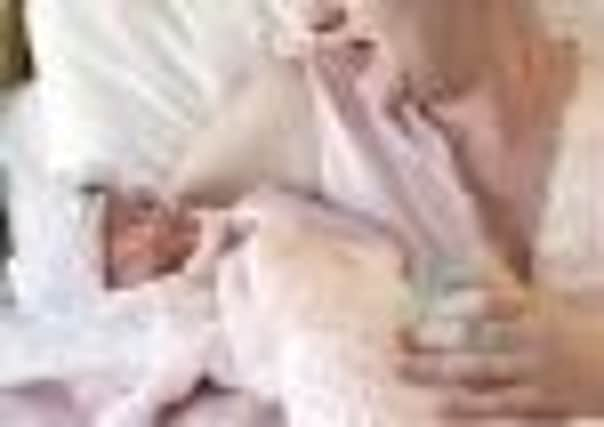Edinburgh in baby boom as under-fives up 18%


The statistics also show we have one of the highest proportions of people living alone, and a rising number of older pensioners.
The Capital’s population increased by 6.2 per cent from 448,600 to 476,600 between 2001 and 2011 – well above the Scottish average of 4.6 per cent.
Advertisement
Hide AdAdvertisement
Hide AdHowever, it’s the spike in the number of toddlers compared with 2001 that stands out.
The number of children under five in the city has soared by 18 per cent, well ahead of any other part of Scotland and more than three times the average rise during the decade. The official commentary on the census results said: “The main factors determining trends in the number of people aged under five in the population are changes in fertility and changes in the number of women of childbearing age.”
City education convener Paul Godzik acknowledged the figures had implications for school provision and said the council was projecting a rise of 20 per cent in pupils up until 2020.
He pointed out there were still 5000 unused places in the city’s primary schools, but added that the economy and the housing market were influencing where people lived within the city.
“There have been different migration patterns over the last few years and that’s having an effect on demand for school places. People are tending to stay in the inner city areas for longer – the flight to the suburbs is less. We know we will be under pressure in certain areas across the city. That’s why we are putting additional capacity into four primary schools this summer.”
The council is planning extensions at Wardie, Trinity, Granton and Victoria primary schools.
Amy Wilson, head of census statistics at the National Records of Scotland, said more work was still be done to explain what lay behind some of the dramatic changes. “At this stage it’s difficult to say why patterns in Edinburgh might be different from those elsewhere.”
The census was carried out on March 27, 2011, and the statistics it provides will help decide how taxes will be spent every year on public.
Advertisement
Hide AdAdvertisement
Hide AdMs Wilson said: “The census is the basis on which most services are planned. We ask everyone the same question at the same time, so we have a complete picture. Central government and local authorities will be looking at these figures and what they mean for future provision of schools, care establishments, hospitals and so on.”
Scotland’s over-65 population rose by 10.6 per cent between 2001 and 2011, according to the census. But Edinburgh – along with Dundee, Glasgow and Aberdeen – saw a dip in the number of over-65s – from 69,100 to 68,500.
But all areas recorded an increase in the number of older pensioners. Edinburgh’s over-80 population went up by 13.1 per cent from 18,200 to 20,600. City health and social care convener Ricky Henderson said: “All the figures indicate people are living longer, with more complex health conditions.”
He said work was under way to improve services for people by integrating health and adult social care in the Capital, ahead of legislation on the issue expected from Holyrood in 2015.
EDINBURGH’S VITAL STATISTICS
EDINBURGH’S population is made up of 232,400 males (48.8 per cent) and 244,200 females (51.2 per cent).
The city has a total of 223,050 households.
The biggest single age group is 20 to 24-year-olds (47,800) followed by 25 to 29-year-olds (45,300).
Average household size has shrunk from 2.14 people in 2001 to 2.07 in 2011.
‘Financially, you take a hit but i love it’
NIVEN Easter moved into a one-bedroomed flat in Dalry about three months ago, becoming one of more than 87,000 people living on their own in Edinburgh.
Advertisement
Hide AdAdvertisement
Hide AdThe 34-year-old professional abseiler said: “When you’re sharing a flat, you’re never entirely sure if the milk will still be in the fridge when you get home.
“I got to a point in my life when I thought I would like to try living by myself without other people to deal with.”
And so far he’s enjoying the change.
“The time I spend in my house is nice – it’s my stuff, my space, everything is laid out how I like it. Financially, you take a hit but I’m loving it.”
‘GREAT PLACE FOR A FAMILY’
CHRISTINA Macmillan and her two daughters – Imogen, five, and Phoebe, six months, pictured inset – are shining examples of Edinburgh’s baby boom which has seen Edinburgh’s under-five population soar by 18 per cent in ten years.
“Both times, when I was having my children the midwives said there was a baby boom in Edinburgh,” says Christina, 33.
She and her husband Andy, 34, an audio-visual technician, say the Capital is a great place to have kids.
“I have no complaints about the facilities for young children,” she says. “There’s plenty to do. Most cafes and restaurants are quite accepting of young children, even some bars as well.
“There are lots of activities in Slateford where we live – the health centre has a post-natal group for young children and there are play groups at various churches; there are swimming classes for little ones and parks that are quite well maintained by
the council.”
‘OLDER PEOPLE GIVE SO MUCH’
Advertisement
Hide AdAdvertisement
Hide AdA GROWING older population is a big plus, according to charity Age Scotland.
Campaigns officer Doug Anthoney said: “Older people add immense value to society.”
However, he said as more lived longer alone, better planning is needed.
“In Dumbiedykes, we found older people couldn’t use public transport in winter as the bus had been re-routed to the top of a steep hill.”